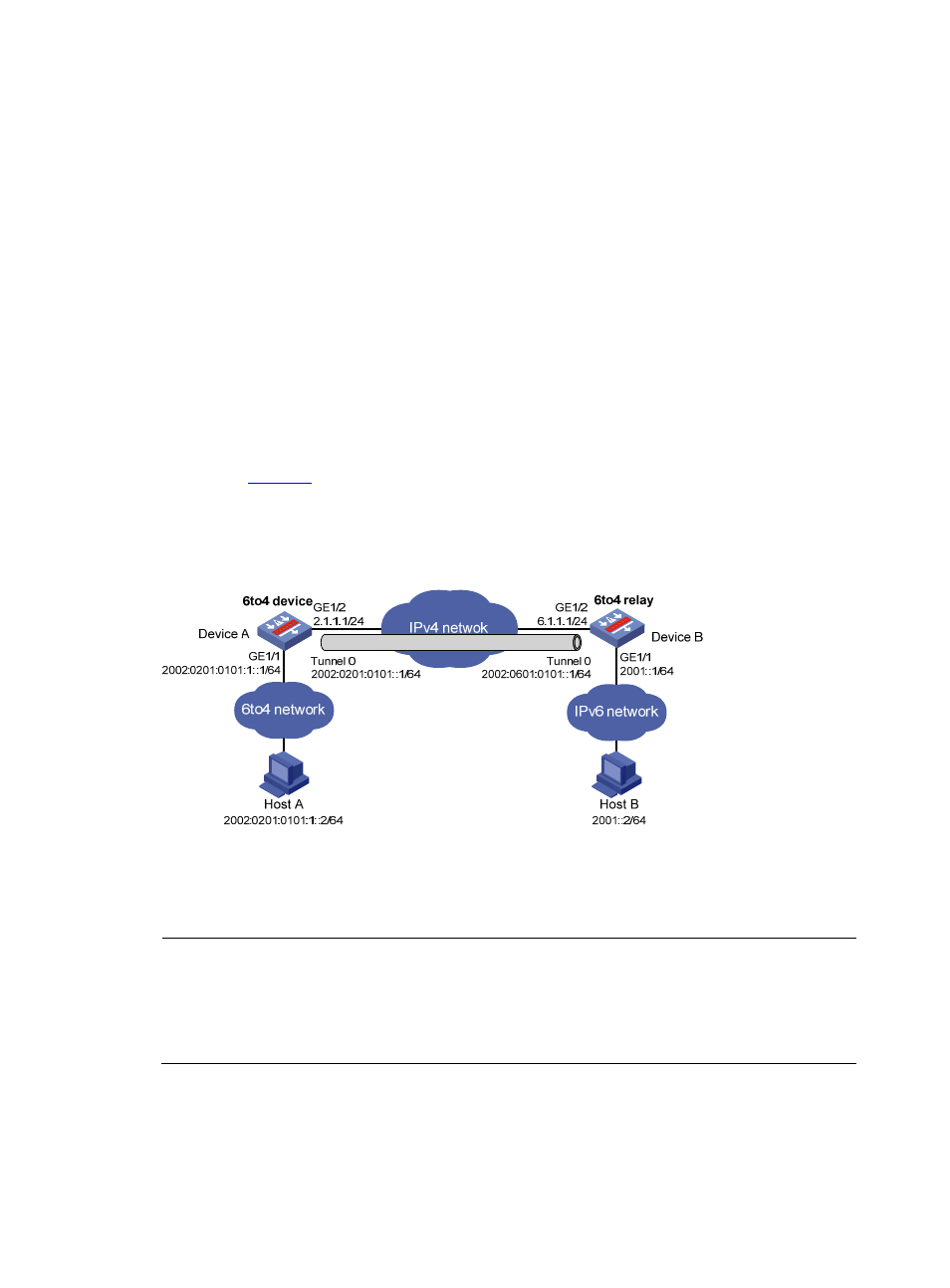6to4 relay configuration example, Network requirements, Configuration procedure – H3C Technologies H3C SecPath F1000-E User Manual
Page 166

20
Pinging 2002:501:101:1::2
from 2002:201:101:1::2 with 32 bytes of data:
Reply from 2002:501:101:1::2: bytes=32 time=13ms
Reply from 2002:501:101:1::2: bytes=32 time=1ms
Reply from 2002:501:101:1::2: bytes=32 time=1ms
Reply from 2002:501:101:1::2: bytes=32 time<1ms
Ping statistics for 2002:501:101:1::2:
Packets: Sent = 4, Received = 4, Lost = 0 (0% loss),
Approximate round trip times in milli-seconds:
Minimum = 0ms, Maximum = 13ms, Average = 3ms
6to4 Relay Configuration Example
Network requirements
As shown in
, Device A is a 6to4 device, and 6to4 addresses are used on the connected IPv6
network. Device B serves as a 6to4 relay device and is connected to the IPv6 network (2001::/16).
Configure a 6to4 tunnel between Device A and Device B to make Host A and Host B reachable to each
other.
Figure 10 Network diagram for a 6to4 relay
Configuration procedure
NOTE:
•
Make sure that Device A and Device B are reachable to each other.
•
The configuration on Device B is similar to that on Device A. However, to enable communication
between the 6to4 network and the IPv6 network, you need to configure a route to the IPv6 network on
the 6to4 device.
•
Configuration on Device A
# Enable IPv6.
[DeviceA] ipv6
